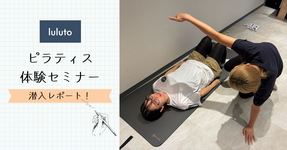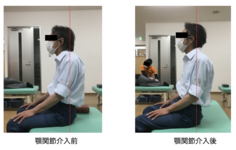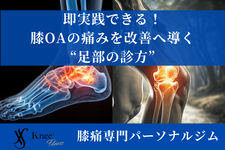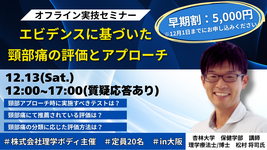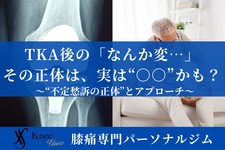
頚部疾患は、外来患者の中でも特に多く見られ、日常生活や仕事に大きな影響を及ぼす。近年の研究では、頚部痛の発生メカニズムや病態ごとの特徴が明らかになり、それに応じた理学療法アプローチが進化している。本記事では、頚部痛のメカニズム・分類・治療法について最新の知見を整理し、理学療法の臨床応用について詳しく解説する。
1. 頚部疾患の基本構造と機能障害
頚部筋群の役割と機能
頚部の運動と安定性は、表層筋と深層筋のバランスによって維持される。
| 筋群 | 代表的な筋肉 | 役割 |
|---|---|---|
| 表層筋 | 僧帽筋・肩甲挙筋 | 関節の動き・安定性 |
| 深層筋 | 頚長筋・後頭下筋群 | 分節の安定性・先行収縮 |
深層筋の機能低下は、頚椎の分節的な不安定性を招き、疼痛の一因となることが示唆されている。
頚椎の運動特性
頚椎は7つの椎骨で構成され、上位頚椎(C1-2)と下位頚椎(C3-7)に分類される。頚部の正常運動では上位胸椎との連動が重要である【Tsang, 2013】。
| 頚椎区分 | 主な動き | 影響する筋群 |
|---|---|---|
| 上位頚椎(C1-2) | 回旋 | 後頭下筋群 |
| 下位頚椎(C3-7) | 屈曲・伸展 | 頚長筋・僧帽筋 |
頚部痛の患者では、上位胸椎の可動性が低下し、それが頚部の過負荷につながることが報告されている【Ryo, 2022】。
2. 病態別の特徴と治療アプローチ
椎間孔・椎間板の病態
頚椎の変性により椎間孔が狭窄すると、神経根が圧迫され、疼痛やしびれが生じる。また、椎間板の変性により神経線維が発達し、椎間板性の疼痛が引き起こされる。
| 病態 | 主な症状 | 理学療法のポイント |
|---|---|---|
| 椎間孔狭窄 | 上肢のしびれ・疼痛 | 神経根の負荷を軽減する姿勢改善 |
| 椎間板変性 | 持続的な頚部痛 | 可動域改善・疼痛軽減エクササイズ |
| 終板損傷 | 頚部の可動性低下 | MRI評価の活用と機能回復訓練 |
また、頚部痛に対する胸椎の治療効果が報告されており、頚部疾患の理学療法においては肩甲骨のアライメント評価が重要とされる【Gebrerufael, 2023】【Supatcha, 2024】。
3. 外傷性頚部症候群(むち打ち症)とその治療
交通事故などの衝撃により、頚椎が過伸展・過屈曲すると、靱帯損傷や椎間関節の炎症が生じる。むち打ち症の影響は心理社会的要因とも密接に関連している【Li et al., 2003】【Walton, 2013】。
| 主な影響 | 具体的な症状 | 治療アプローチ |
|---|---|---|
| 頚椎の靱帯損傷 | 可動性の低下 | 深層筋トレーニング |
| 後頭下筋群の異常 | 頚部の位置感覚異常 | 視覚・前庭系の統合訓練 |
| 心理的影響 | 不安・抑うつ | 説明・心理面のケア |
特に、外傷後の中枢性過敏性が発症する可能性があり、疼痛の閾値低下やストレスとの関連が示唆されている【Sterling, 2004】【Petersen-Felix, 2004】【Nijs, 2017】。
4. 頚部痛の分類と理学療法の考え方
頚部疾患の原因は多様であり、単一の病態ではなく、症状ごとに分類するアプローチが推奨されている【Blanpied et al., 2017】。
| サブグループ | 特徴 | 代表的な治療 |
|---|---|---|
| 頚椎可動性障害 | 頚部の動きが制限される | 可動域訓練・関節モビライゼーション |
| 神経根障害 | 放散痛・神経症状 | 神経モビライゼーション・姿勢改善 |
| 運動調整障害 | 過敏性疼痛・慢性痛 | 深層筋トレーニング、認知行動療法 |
| 頭痛関連頚部痛 | 後頭部、側頭部、前頭部へ放散する痛み | 頚部および肩甲帯の運動療法 |
また、特定の方向性に基づく治療が効果的であるとされており、頚部痛は適切な治療方向に応じた分類を行うべきである【Tao et al., 2018】【Dewitte, 2018】。
まとめ
頚部疾患の治療においては、機能的な問題を総合的に評価し、症状に応じたアプローチを実施することが重要である。特に、「症状に応じたサブグループ化」が治療効果を高めるための重要な視点とされている【Dewitte, 2018】。
理学療法士は、エビデンスに基づく評価と治療法を活用し、個別の患者に適したアプローチを展開することが求められる。
参考文献
1.Cooper G, Bailey B, Bogduk N. Cervical zygapophysial joint pain maps. Pain Med. 2007;8(4):344-353.
2.Tsang S. Normal kinematics of the neck: The interplay between the cervical and thoracic spines. Man Ther. 2013;18(3):215-220.
3.Ryo Y. Analysis of cervical and upper thoracic spinal segmental rotation angles during end-range neck rotation: Comparison with and without neck pain. J Man Manip Ther. 2022;30(2):101-107.
4.Gebrerufael S. Effectiveness of thoracic spine manipulation on the management of neck pain: A systematic review and meta-analysis of randomized control trials. J Pain Res. 2023;16:1573-1589.
5.Supatcha K. Effects of slouched sitting posture on clavicular and scapular orientations and movements in individuals with neck pain with scapular dysfunction. Gait Posture. 2024;108:201-209.
6.Siwaluk S. Effects of active scapular correction on cervical range of motion, pain, and pressure pain threshold in patients with chronic neck pain and depressed scapula: A randomized controlled trial. J Man Manip Ther. 2022;30(1):50-58.
7.Nithin P. Effects of scapular interventions on pain and disability in subjects with neck pain: A systematic review and meta-analysis of randomized controlled trials. Spine Surg Relat Res. 2023;7(2):114-126.
8.Jha R. Updates on pathophysiology of discogenic back pain. J Clin Med. 2023;12(5):1024-1036.
9.Jiang Y. Ultrasonic osteotome assisted posterior endoscopic cervical foraminotomy in the treatment of cervical spondylotic radiculopathy due to osseous foraminal stenosis. J Korean Neurosurg Soc. 2023;66(4):421-429.
10.LaDan. Prediction of neural space narrowing and soft tissue injury of the cervical spine concerning modern restraint arrangements in trauma collisions. Advances in Science. 2023;12(3):184-197.
11.Arockia S. A comprehensive review of wearable assistive robotic devices used for head and neck rehabilitation. Results in Engineering. 2023;18:102654.
12.Ross A. The biology of prolotherapy and its application in clinical cervical spine instability and chronic neck pain: A retrospective study. Eur J Prev Med. 2023;11(2):92-103.
13.Pong B, Yang L, Li Y, Lu T, Liu Y. Cervical proprioception impairment in neck pain: Pathophysiology, clinical evaluation, and management: A narrative review. Pain Ther. 2021;10(1):245-265.
14.Li J, Holm LW, Bote and Joint Decade 2000-2010 Task Force on Neck Pain and Its Associated Disorders. Course and prognostic factors for neck pain in whiplash-associated disorders (WAD). Spine (Phila Pa 1976). 2003;28(24):2023-2031.
15.Armstrong P, Naylor JM, Harris TA. Factors predicting outcome in whiplash injury: A systematic meta-review of prognostic factors. J Orthop Traumatol. 2017;18(2):137-148.
16.Walton DM. Risk factors for persistent problems following acute whiplash injury: Update of a systematic review and meta-analysis. J Orthop Sports Phys Ther. 2013;43(2):81-91.
17.Sterling M. Characterization of acute whiplash-associated disorders. Spine (Phila Pa 1976). 2004;29(4):470-478.
18.Petersen-Felix S. Evidence, mechanisms, and clinical implications of central hypersensitivity in chronic pain after whiplash injury. Clin J Pain. 2004;20(2):134-140.
19.Nijs J. Sleep disturbances and severe stress as glial activators: Key targets for treating central sensitization in chronic pain patients? Expert Opin Ther Targets. 2017;21(5):431-439.
20.Blanpied PR, Gross AR, Elliott JM, Devaney LL, Clowley D, Walton DM, Sparks C, Robertson EK. Neck pain: Revision 2017. J Orthop Sports Phys Ther. 2017;47(7):A1-A83.
21.Tao R, Wlodarski M, Dolutan J. Pain pattern classification and directional preference for patients with neck pain. J Man Manip Ther. 2018;26(3):137-145.
22.Dewitte V. Clinical classification criteria for nonspecific low back pain: A Delphi-survey of clinical experts. Musculoskelet Sci Pract. 2018;34:33-41.
















.png)
